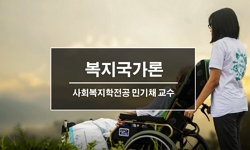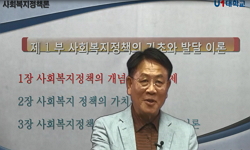본 연구는 복지국가 실현을 위해 저 출산 시대의 원인을 보육정책을 통하여 연계성을 알아보고 보육의 운영에서 나타나는 문제점을 개선하고 저 출산을 극복할 수 있는가를 알아보고자 하...
http://chineseinput.net/에서 pinyin(병음)방식으로 중국어를 변환할 수 있습니다.
변환된 중국어를 복사하여 사용하시면 됩니다.
- 中文 을 입력하시려면 zhongwen을 입력하시고 space를누르시면됩니다.
- 北京 을 입력하시려면 beijing을 입력하시고 space를 누르시면 됩니다.

복지사회 실현을 위한 보육정책의 방향 = Possible Ways of Korean Childbirth Policy in the Face of Low Birth Rate - Based on Gyeongnam province -
한글로보기https://www.riss.kr/link?id=A82494198
- 저자
- 발행기관
- 학술지명
- 권호사항
-
발행연도
2010
-
작성언어
-
-
주제어
복지국가 ; 보육정책 ; 보육시설 ; 출산률 ; Welfare state ; child care policy ; nursing facilities ; birth rates
-
KDC
330
-
등재정보
KCI등재후보
-
자료형태
학술저널
-
수록면
21-58(38쪽)
-
KCI 피인용횟수
3
- 제공처
-
0
상세조회 -
0
다운로드
부가정보
국문 초록 (Abstract)
본 연구는 복지국가 실현을 위해 저 출산 시대의 원인을 보육정책을 통하여 연계성을 알아보고 보육의 운영에서 나타나는 문제점을 개선하고 저 출산을 극복할 수 있는가를 알아보고자 하였다. 이러한 목적으로 본 연구에서 설정한 연구문제는 다음과 같다. 첫째, 보육 시설의 유형과 서비스 역할의 이용자 만족도는 어떠한가? 둘째, 출산 장려를 위한 보육 시설 운영의 문제점과 개선점은 무엇인가? 셋째, 보육 시설 공급 확대와 맞춤형 취약 보육의 확대 방안은 어떠한가? 넷째, 보육 시설의 환경과 프로그램 개선에 대한 욕구도의 만족도는 어떠한가? 다섯째, 보육 정책의 문제점과 보육시설 운영주체의 개선점 및 수요자의 만족도를 높일 수 있는 방안은 무엇인가? 이와 같은 문제를 밝혀내기 위해 경남에 소재하고 있는 창원시, 김해시, 진해시, 창녕군, 의령군, 함양군의 보육시설 학부모를 대상으로 설문지 383부를 통하여 빈도분석 하였다. 이러한 과정을 거쳐 이루어진 연구의 결과는 다음과 같다. 첫째, 보육시설의 유형인 국공립 보육시설, 법인 보육시설, 민간 보육시설, 가정 보육시설, 크게 4대 분과와 각종 맞춤형 취약 보육시설, 직장 보육시설, 법인외 보육시설, 장애통합 보육시설, 방과 후 보육시설, 야간 보육시설, 24시간 보육시설, 공휴일 보육시설, 등의 시설을 살펴본 결과 국공립 보육시설의 호응도는 매우 높았으며 취약 보육시설의 확대와 선호도는 전체수에 비하여 모두 필요하다는 의견이었다. 둘째, 출산장려를 위한 보육시설 운영의 문제는 보육비용의 가중 부담의 문제로 나타났으며, 각종 세제 및 아파트 입주시 가점 부여 등과 맞춤형 보육의 운영 형태가 제도적으로 개선되기를 희망하는 것으로 나타났다. 셋째, 보육시설 공급은 국공립의 확대와 맞춤형 취약 보육시설의 확대를 요구하는 것으로 나타났다. 그러나 같은 예산이라면 여러 개의 민간 시설에 나누어 개보수 하여 환경을 개선하는 것이 국공립 보육시설을 추가 설치하는 것보다 더욱 효과적 이라는 분석과 각종 맞춤형 취약 보육시설을 국공립 보육시설 보다 우선적으로 설치하여야 한다는 것으로 나타났다. 넷째, 보육시설의 환경과 프로그램에 대한 요구는 개선하여야 한다가 매우 높게 나타났으며, 시설과 환경 정책보다는 안전, 보건, 위생, 영양, 급식 등 관리운영 개선을, 프로그램에 있어서는 인성교육이 매우 높았으며, 사회성교육, 기초 생활습관 순으로 나타났다. 또한 만족도는 개선되어야 한다는 의견이 높았다. 다섯째, 보육정책의 문제점과 운영 주체 개선 및 만족도에서는 보육비용과 방과 후 보육과 중학교까지의 사교육비 지원 확대를 원했으며, 운영 주체로는 국가 또는 지자체에서 운영하는 방법과 종교시설에서 운영하거나 복지관 또는 법인시설에서 운영하는 순으로 나타났으며, 대체로 보육시설에 대한 만족도에서는 정책, 비용, 환경 및 프로그램 등 지원 확대가 개선되는 것이 중요하다는 의견이었다. 이상과 같이 저 출산의 원인을 보육정책에서 살펴보았다. 대체로 국가적 차원에서 보다 많은 제도 개선과 비용의 지원을 선호하였으며 부모들의 욕구에 맞는 보육 운영을 한다면 저 출산의 극복은 희망적이며 범국가적 차원에서 보다 적극적인 출산 장려 정책으로 세계 최저 출산률의 멍예를 벗고 노동 인력의 수평을 맞추는 다 출산국이 될 수 있다는 희망감을 보였다.
다국어 초록 (Multilingual Abstract)
The purpose of this study was to identify potential causes of low birth rate in association with childcare policy, and was also to find out possible ways to improve questions in current childcare programs in operation and overcome the issue of low bir...
The purpose of this study was to identify potential causes of low birth rate in association with childcare policy, and was also to find out possible ways to improve questions in current childcare programs in operation and overcome the issue of low birth rate. To achieve the purposes, this study set the following questions: First, how much do our users feel satisfied with each type and service role of childcare facilities? Secondly, what are the issues and improvements in operation of childcare facilities to encourage childbirth? Thirdly, how can we expand supply of childcare facilities and extend customized childcare programs for social weak classes? Fourthly, how much do our users feel satisfied with any improvement of childcare facility environment and program to meet their needs? Fifthly, what are the issues of current childcare policy as well as the improvements for the principal of each childcare facility? And how can we improve the satisfaction of potential users at childcare services? In order to find answers to the above questions, this study distributed total 383 questionnaires to the parents of children attending local childcare facilities in Changwon city, Kimhae city, Jinhae city, Changnyeong- gun, Euiryeong-gun and Hamyang-gun of Gyeongnam province for survey and frequency analysis. Based on these procedures, this study could come to the following findings: First, it was found that major 4 categories of childcare facility (i.e. national or public / corporate / private / domestic) as well as detailed categories of childcare facility (e.g. customized childcare facilities for social weak classes. workplace childcare facility, non-corporate childcare facility, integrated childcare facility, extracurricular childcare facility, night childcare facility, around-the-clock childcare facility, and holiday childcare facility) had a tendency to prefer national or public childcare facility and the expansion of childcare facilities for social weak class. Secondly, it was found that the issue of operating childcare facilities for encouraging childbirth involved the issue of additional childcare expenses, and our parents hoped that they would get advantage points in various tax systems and movement into apartment, and there would be also institutional improvements in the operation of customized childcare. Thirdly, with regard to supply of childcare facilities, it was found that our parents demanded expansion of national or public childcare facilities and customized childcare facilities for social weak classes. However, it was found that it would be more effective to remodel and repair several private childcare facilities, if at the expense of same budget, for environmental improvement, rather than to install additional national or public childcare facilities. And it was found that they felt it required to install a variety of customized childcare facilities for social weak classes in advance of national or public childcare facilities. Fourthly, it was found that our parents felt it very demanded to improve the issue of unsatisfied needs for the environment and program of childcare facilities. They felt it more demanded to improve management and operation aspects of childcare facilities (safety, health, sanitation, nutrition and feeding) rather than policies for facility and environment. And they had highest preference for personality education as a part of childcare program, which was followed by sociality education and basic daily habits of life. Moreover, it was found that they had a high tendency to view in favor of improving customer satisfaction at childcare programs. Fifthly, in regard to issues of current childcare policy, improvement of childcare facility operator and parents' satisfaction with childcare facilities, it was found that our parents hoped to benefit from the expansion of governmental supports for chilcare expenses and extracurricular privateeducation expenses till the compltion of middle school cour
목차 (Table of Contents)
- Ⅰ. 서 론
- Ⅱ. 이론적 배경
- Ⅲ. 연 구 방 법
- Ⅳ. 분석결과
- Ⅴ. 결 론
- Ⅰ. 서 론
- Ⅱ. 이론적 배경
- Ⅲ. 연 구 방 법
- Ⅳ. 분석결과
- Ⅴ. 결 론
참고문헌 (Reference)
1 보건복지가족부, "통계포털"
2 "통계청"
3 최은영, "취업여성의 일-가족 양립지원 정책방향" 2006
4 김향숙, "출산장려정책의 여성 주의적 접근" 계명대학교 여성대학원 2008
5 경상남도, "주요업무 편람" 저출산 고령화대책과 2008
6 박희수, "정부 출산 장려정책과 저 출산의도에 대한 연구" 중앙대학교 행정대학원 2008
7 송정희, "저출산의 원인 분석과 대응 방안에 관한연구" 가야대학교 행정대학원 2007
8 이문옥, "저출산을 대비한 출산장려 정책에 관한연구" 경원대학교 행정대학원 2006
1 보건복지가족부, "통계포털"
2 "통계청"
3 최은영, "취업여성의 일-가족 양립지원 정책방향" 2006
4 김향숙, "출산장려정책의 여성 주의적 접근" 계명대학교 여성대학원 2008
5 경상남도, "주요업무 편람" 저출산 고령화대책과 2008
6 박희수, "정부 출산 장려정책과 저 출산의도에 대한 연구" 중앙대학교 행정대학원 2008
7 송정희, "저출산의 원인 분석과 대응 방안에 관한연구" 가야대학교 행정대학원 2007
8 이문옥, "저출산을 대비한 출산장려 정책에 관한연구" 경원대학교 행정대학원 2006
9 강복화, "저출산에 따른 보육 정책의 발전 방향" 명지 대학교 사회복지 대학원 2003
10 정연숙, "저출산에 따른 국가의 대응 정책에 관한연구" 연세대학교 행정대학원 2006
11 오순희, "저출산 요인과 출산 장려를 위한 보육 정책의 발달과제" 청주대 사회복지대학원 2006
12 박맹숙, "저출산 시대의 한국 보육 정책에 관한 연구" 가야대학교 행정대학원 2006
13 이현순, "저출산 시대의 보육정책의 발전방향" 동국대학교 행정대학원 2009
14 이정미(2005), "저출산 시대의 보육정책 방향에 관한 연구" 명지대학교 사회복지대학원 2005
15 최선미, "저출산 시대에 따른 가족복지 정책 방향" 관동대학교 경영행정대학원 2008
16 정윤경, "저출산 문제점과 정책 실효성에 관한연구" 이화여자대학교 정책과학대학원 2007
17 "육아정책개발센터"
18 오정균, "우리나라 출산장려 정책의 개선 방안에 관한 연구" 서울 시립대학교 도시과학 대학원 2007
19 이 옥, "영유아보육법 개정과 아동학 전공자의 역할" 한국아동학회 95-117, 2004
20 황휘선, "영유아 보육정책의 인식에 관한 실태분석" 한양대학교 행정 자치대학원 2008
21 "여성가족정책 사이버기록관"
22 전미숙, "아기 자녀를 둔 부모의 성역할 태도와 성역할 행동간의 관계 연구" 경남대학교 교육대학원 2008
23 김금숙, "수요자 중심의 영유아 보육 서비스 확충 에 관한 연구" 부경대학교 사회복지대학원 2009
24 김영미, "복지 국가와 여성 노동권: 제도적 지원과 보장 수준의 관계에 관한 비교사회 정책 연구" 서울대학교 대학원 2007
25 이순형, "보육학개론" 학지사 2006
26 유소정, "보육정책의 활성화 방안에 관한 연구:출산장려 정책을 중심으로" 건국대학교 행정대학원 2005
27 이세희, "보육정책의 개선방안에 관한 연구: 출산장려정책중심으로" 동국 대학교 행정대학원 2009
28 "보육자격관리사무국"
29 최강연, "보육시설 평가 인정제에 관한 종사자 들의 인식" 경남대학교 교육대학원 2006
30 박화숙, "보육서비스 발전 방향 연구:저출산 문제에 대한 대책 중심으로" 전남대학교 행정대학원 2006
31 경상남도, "보육사업 시행계획" 저출산고령화대책과 2009
32 "보건복지가족부"
33 "민간 보육시설의 비영리 보육 법인화 방안 연구" 인제 대학교 대학원 2008
34 여성 가족부, "“보육사업 안내” 97-07년"
35 보건 복지가족부, "“보육사업 안내” 08-09년"
동일학술지(권/호) 다른 논문
-
- 한국교정복지학회
- 천정환(Chun, Jung Hwan)
- 2010
- KCI등재후보
-
- 한국교정복지학회
- 임안나(Ahnna Lim)
- 2010
- KCI등재후보
-
- 한국교정복지학회
- 박영숙(Young-Suk Park)
- 2010
- KCI등재후보
분석정보
인용정보 인용지수 설명보기
학술지 이력
| 연월일 | 이력구분 | 이력상세 | 등재구분 |
|---|---|---|---|
| 2026 | 평가예정 | 재인증평가 신청대상 (재인증) | |
| 2020-01-01 | 평가 | 등재학술지 유지 (재인증) |  |
| 2017-01-01 | 평가 | 등재학술지 유지 (계속평가) |  |
| 2013-01-01 | 평가 | 등재학술지 선정 (등재후보2차) |  |
| 2012-01-01 | 평가 | 등재후보 1차 PASS (등재후보1차) |  |
| 2010-01-01 | 평가 | 등재후보학술지 선정 (신규평가) |  |
학술지 인용정보
| 기준연도 | WOS-KCI 통합IF(2년) | KCIF(2년) | KCIF(3년) |
|---|---|---|---|
| 2016 | 1.5 | 1.5 | 1.42 |
| KCIF(4년) | KCIF(5년) | 중심성지수(3년) | 즉시성지수 |
| 1.26 | 1.15 | 1.414 | 0.49 |





 스콜라
스콜라






